A Land of Distinct Cultural Identity
South Korea is a country with distinctive features; the traditional and historical, as well as the sleek and cosmopolitan. These days most town consist of a new fashionable area with coffee shops and karaoke bars, but in these same towns you will also find the Korea of old; alleyways and street markets in an intriguing maze where vendors sell everything, just as they have done for hundreds of years.
South Korea has much to offer the avid traveler with its rich history, vibrant culture and modern society. In addition to its futuristic cityscapes, South Korea is also known for its green, mountainous countryside and coastal fishing villages.
Korea’s Beautiful Four Seasons
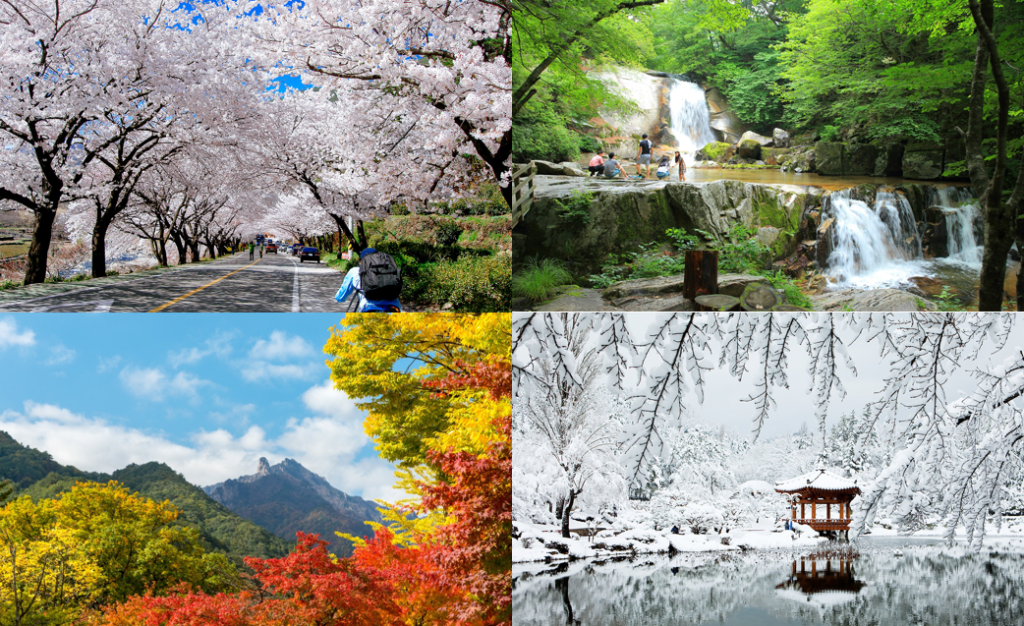
Korea is geographically situated in a temperate climate zone at medium latitude. As a result, it has four distinct seasons. In general, spring is from March to May, summer from June to August, autumn from September to November, and winter from December to February. The weather in spring and autumn is clear and dry due to the influence of anticyclones; summer is hot and humid due to Korea’s location on the North Pacific Edge; and in winter, continental high pressure brings cold, dry weather.
The autumn season in Korea is between September and November. The weather is cool and crisp, and the sky is blue with few clouds. The heat of summer still seems to linger in September with the daytime being hot, but the weather is cool in the morning and evening. In October, there is less precipitation and the humidity in the air decreases, resulting in crisp and enjoyable weather. In late summer to early autumn, typhoons rising from the South Pacific may occur.
Autumn is also a season of beautiful falling leaves. Ginkgo trees and maple trees throughout Korea change their hues to yellow and crimson. During this time, Koreans love to go hiking in the mountains to enjoy the picturesque landscape created by autumn leaves. Mountains and famous autumn foliage spots around the nation are bustling with people during this time of the year. Autumn is also the season of bountiful harvest, with rice, sweet potatoes, apples, pears, and jujubes ripening all around the nation.
Korean Traditional Clothing (Hanbok)
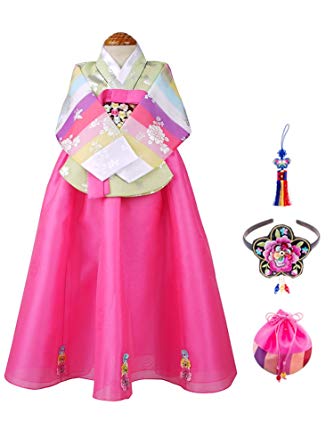
Korean traditional clothing is both brilliant in its bright coloring and subdued in its flowing lines and the way it hides the body shape.
The Korean people learned to use various fabrics, such as sambe (hemp), mosi (ramie), cotton and silk to make a range of clothing that was not only attractive but also provided them with effective protection even during the harshest winters and the hottest summers.
They made warm winter clothes using the technique of filling soft cotton between two layers of material, silk or cotton fabric, and sewing them together with fine stitching, and produced cool summer clothes with hemp and ramie. These clothes typically feature graceful lines and forms that create the serene aura characteristic of the traditional Korean clothes we know as hanbok.
The colorful national costume hanbok is often worn during national holidays and festive occasions. The designs and colors of the various forms represent the rich culture and society of traditional Korea.
Five Grand Palaces of Seoul
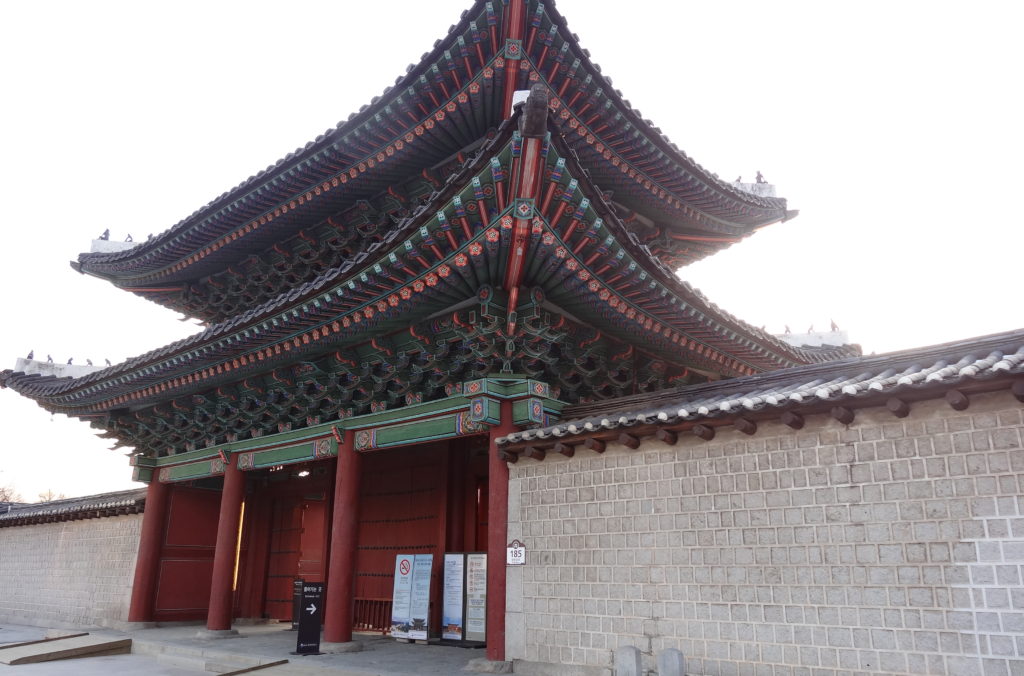
Central Seoul is filled with historic buildings and monuments, among them the Five Grand Palaces of Seoul. These royal palaces date back hundreds of years to the Joseon Dynasty, but thanks to the wars of the 20th century, most of them are now faithful reconstructions.
The palaces have distinctly beautiful architecture, plus the grounds themselves are pleasant to walk around as well. If you’re ambitious, you can walk to all Five Grand Palaces in one day, as they are all centrally located. The Five Grand Palaces of Seoul are Gyeongbokgung, Changdeokgung, Changgyonggung, Deoksugung, & Gyonghuigung.
Hanjeongsik, a Korean full-course meal with five surprises
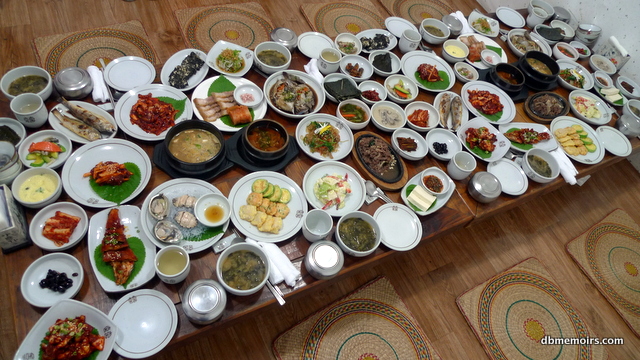
Foreigners who have experienced hanjeongsik, the Korean equivalent of the Western course meal, are usually surprised a total of five times. The first surprise is the immense size of the table. When seated, it is impossible to reach the opposite end of the table with one’s arm.
The second is the fact that the table is so completely covered with dishes that there is no space left on it; each dish holds a different food.
The third surprise is that of all the foods present, the only ones that are for one’s exclusive consumption are rice and soup. The other foods are to be enjoyed with the other people present at the table in a communal interaction of spoons and chopsticks. There is no such thing as spooning out food for oneself on a separate dish. Recently, it has become common to take portions of food onto individual dishes for the sake of hygiene, but the original way of eating Korean food was the shared dipping of utensils into stews, soups and side dishes. Because of this practice, Westerners who are accustomed to eating only the food on one’s plate experience a profound culture shock.
The fourth surprise is the chopsticks. The act of using two thin sticks to bring food to the mouth is no easy task. To many foreigners seeing Korean chopsticks for the first time, the fact that people actually eat with them alone is quite unbelievable. The last surprise is the taste of the food. It is within this fifth surprise that the characteristics of Korean food shine.
Korean food is not served in a time-based format of soup or salad, appetizer, and main dish in sequential order. Instead, all foods of the meal are placed on a single table at once in a “space-based” format. As a result, the Korean meal is not a single table spread in which a person eats only what is placed in front of them, but a shared table that everyone enjoys together.
Korean Street Food
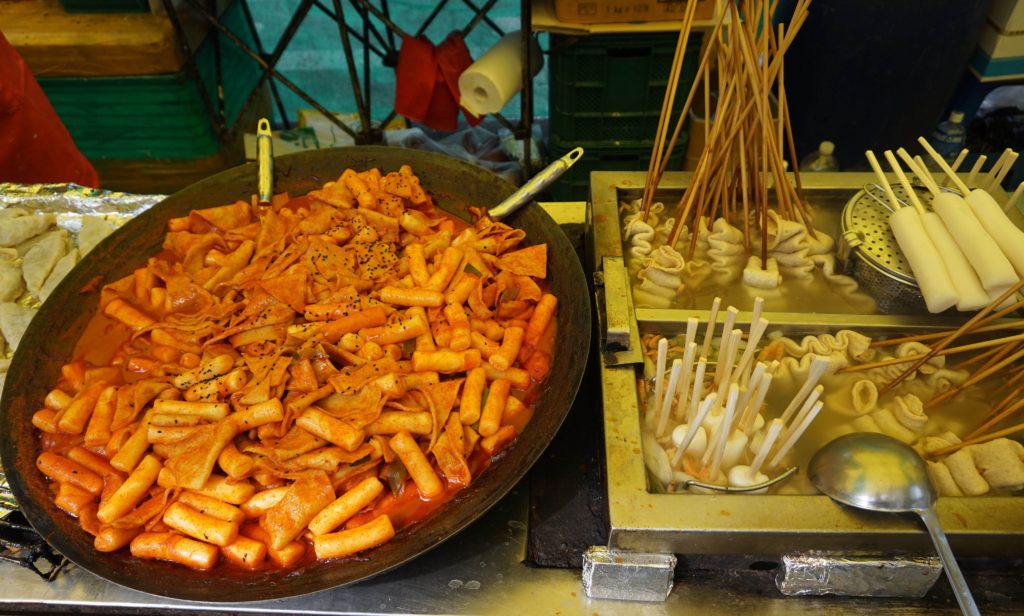
Compared to other developed countries such as Japan, Hong Kong and other Asian countries, Korean street food is more widely exposed. Street food is a spin-off of a snack corner that has been franchised to sell snacks such as rice cake stir fried in spicy sauce (tteokbokki), deep fried fritters (tempura), fish cakes (oden), and Korean sausage (sundae).
The pojangmacha (street vendor) is one of the best places to grab a quick snack or pass the night away drinking with friends. The types of food they serve can usually be eaten quickly while standing up (although some places have cheap chairs or benches) or take with you.
They have many types of food on sticks or “finger foods.” Other specialize in seafood and are geared more towards people who want to sit and have some drinks as well. Smaller stands can be easily carried or rolled from place. Larger, more elaborate ones have plastic tarps to protect patrons from the rain and cold.
Korean Architecture

Korean historical architecture embodies the splendor of form and symbolism in the dwellings of Korea’s educated and elite. Elegant Korean palaces painted in bright and beautiful colors, robust mountain fortresses and peaceful places of learning all combined elements of the natural world with simple lines and shapes. The resulting impression was a quiet harmony that has survived through the ages to the present day.
Demilitarized Zone (DMZ)
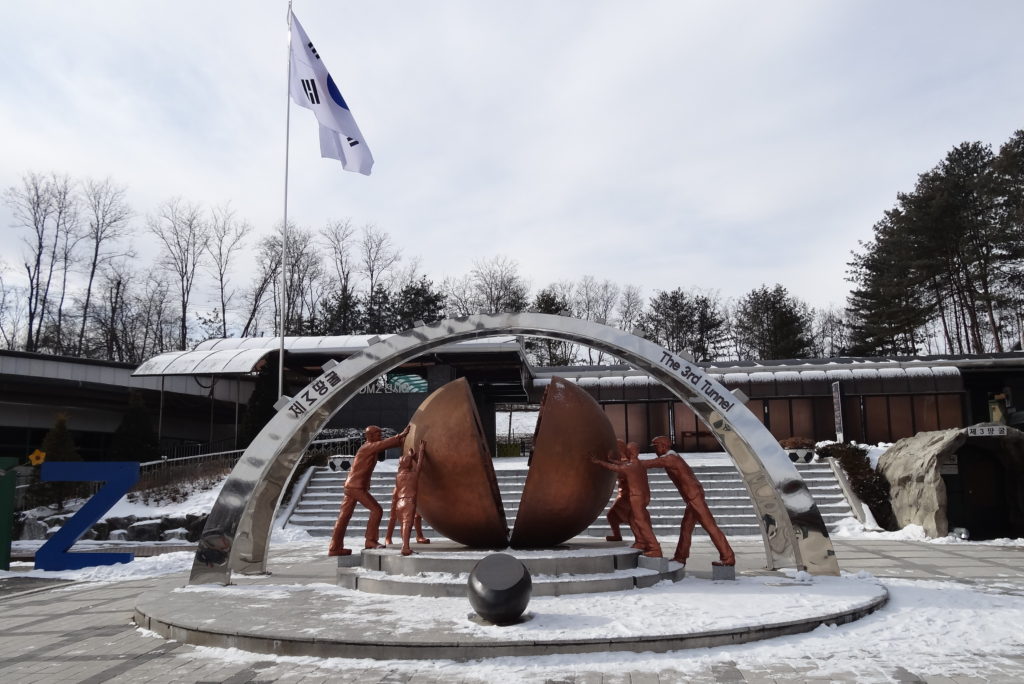
The Demilitarized Zone (DMZ), the symbol of the ideological dispute between North and South Korea and poignant reminder of the Korean War (1950-53), winds 155 miles across the Korean Peninsula. The last remaining vestige of the Cold War, the closed border region between North and South Korea highlights the fact that the Korean War did not end. An uneasy truce continues between the antagonists, but no peace treaty has ever been signed.
Korean History
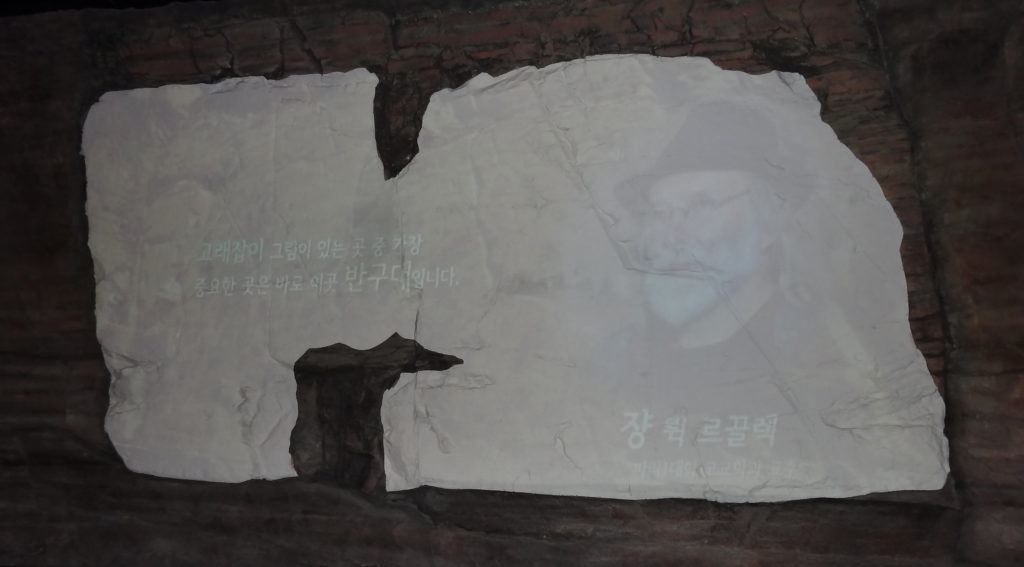
Korea’s history is a fascinating story that spans millennia. This rich heritage is a source of pride for Koreans and is a testament to their strength and resilience as a people and as a culture. Discover for yourself a glimpse of Korea’s captivating history that will leave you wanting to learn more about this incredible country.
Source; Korea official website and Life in Korea
Related Posts
You May Also Like

